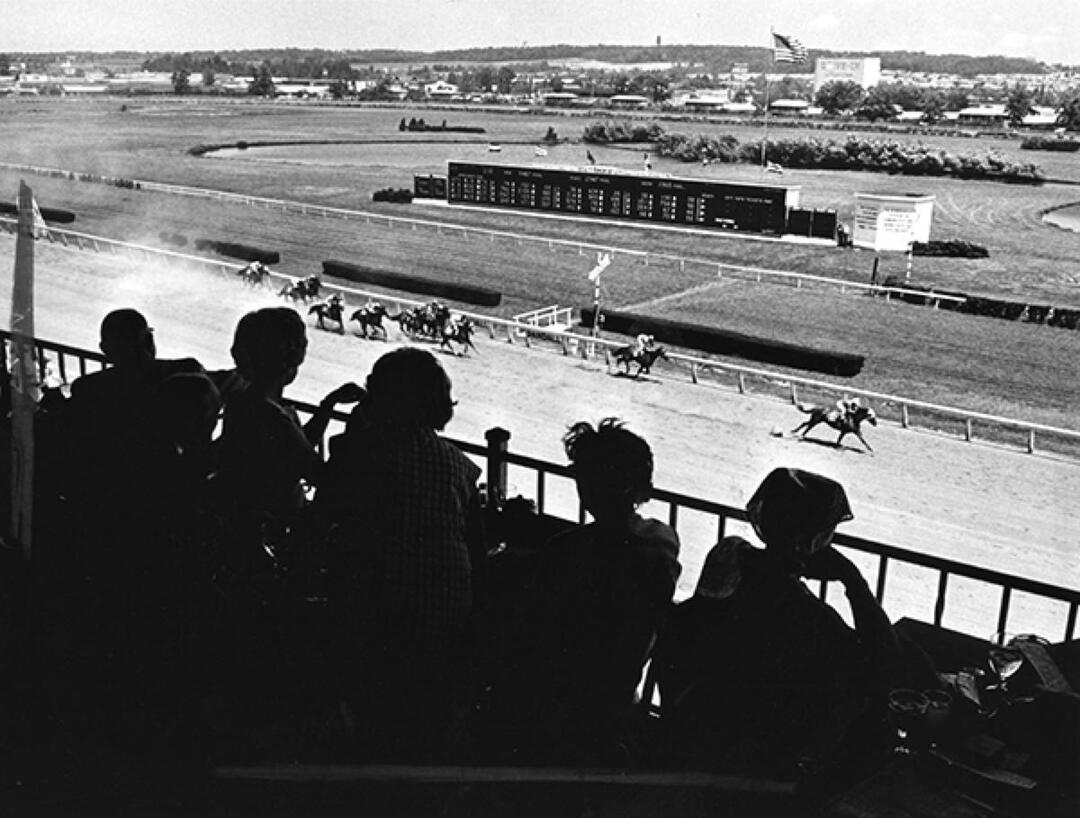
Most of Cleveland's suburban municipalities began as a residential or "bedroom" communities whose residents commuted into the city each weekday, and a few started as preexisting towns shaped by early trade and industry. But one suburb, North Randall, was born in an entirely unique way – as a destination for thoroughbred horse racing. The economic history and center of attraction for North Randall has been revamped repeatedly over the past century. From 1908 to present day, the village has been dominated by horse racing tracks, a mall, and now an Amazon fulfillment facility. However, the first track, Randall Park, and a second, Thistledown, uniquely positioned horse racing as the most important economic engine for North Randall.
The Randall Park race track was originally part of the Forest City Farm which was established by Christopher F. Emery in 1883 as a horse breeding farm. The land for the track was bought in 1905 by Youngstown entrepreneurs and was later acquired by Bert Shank. He later sold 100 acres north of Emery Road to William B. Chisholm for his Thistledown Farms which was Randall Park’s neighbor. The remaining land of that later became the village of North Randall which was established in 1908 with Bert Shank as the first mayor. The village established its major industry in the breeding and training of trotting horses during this time. The racecourse of Randall Park was situated on the southeastern side of the city of Cleveland and served the racing enthusiasts from across the city and region.
Randall Park started as a trotting track for harness racing in 1908, supplanting the much older Glenville Race Track that folded that same year. The park had a one-mile oval-shaped track and a furlong turf course inside the oval. It also featured an open-air grandstand and clubhouse, with the grandstand being able to seat 5,500 people and the clubhouse an additional 2,000 people. The track had stables with a capacity of 650 horses. The track was worth $250,000 and it hosted the Grand Circuit that occurred in 1909. The event, which attracted a massive crowd of 17,000, was won by Emery’s trotter which was driven by Mayor Bert Shank.
Randall Park and Thistledown, which originally opened in 1925, both suffered a series of difficulties in the 1930s and ’40s, including a devastating fire at Thistledown in 1944. Sustained success was elusive until after World War II, when they finally attained a more durable national reputation. The tracks’ schedules grew considerably, and they hosted ever larger crowds to see major races. Thoroughbred racing had replaced trotting (harness) races in popularity, and Randall Park had converted to thoroughbred races in 1939. In 1951, Randall Park received a major upgrade that included grandstand expansion and miniature lakes, hedges, and landscaping in the center of its oval. The Ohio Derby, first run in the 1870s in Cincinnati, moved to a newly rebuilt Thistledown in 1953 and then to Randall Park in 1961.
Later, the Randall Park property was finally purchased by Youngstown-based developer Edward DeBartolo who also had ownership to the nearby Thistledown track and decided to transfer Randall Park’s dates there. Once that was finalized, the Randall Park land was rezoned commercial, and DeBartolo turned it into a shopping center. The $175 million Randall Park Mall opened on August 11, 1976, with 2 million square feet, over 200 stores on two levels, a modern look with unique marble floors, and a distinct constructed interior. This shopping center was intended to change the structure of the community by developing North Randall into a “super city.” DeBartolo initiated projects to create residential communities in which people not only could live but could operate their businesses as well. It eventually became one of the world's largest shopping complexes. The mall had a great run but closed in 2009. Newer malls and lifestyle centers, including Beachwood Place, LaPlace, and Legacy Village, all opened within a few miles between 1978 and 2003, plundering business from Randall Park. Online shopping was another factor around the world as to why malls were closing. Also, as the 2000s progressed, consumer habits shifted away from department stores all together. The rise in crime rates in area also played a factor.
The village’s horse racing heritage entered a new phase in 2010 after the mall shut down, and it opened back up as a Thistledown Racino managed by an entertainment company. Businesses later began to fail as consumers lost the comfort in their safety to shop. It was reconstructed and later became an Amazon fulfillment center in 2018.
Images












